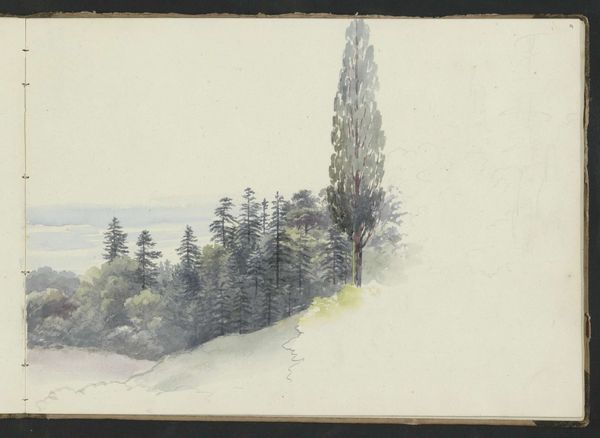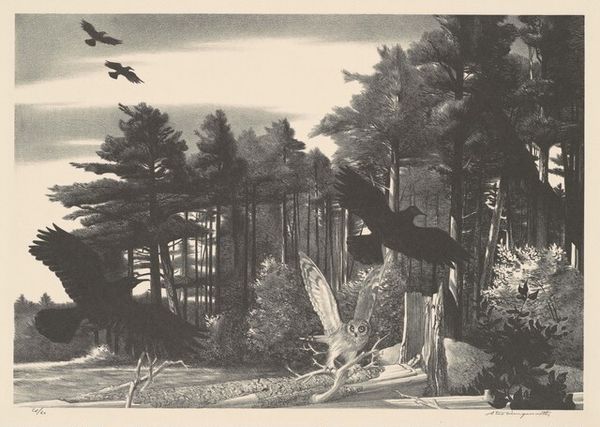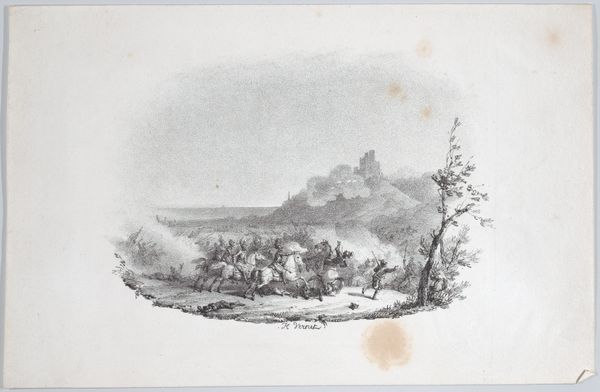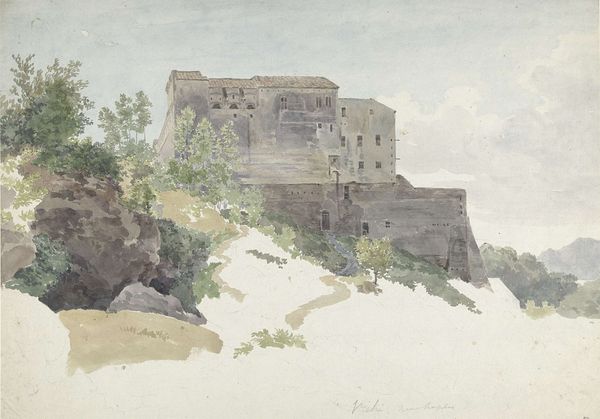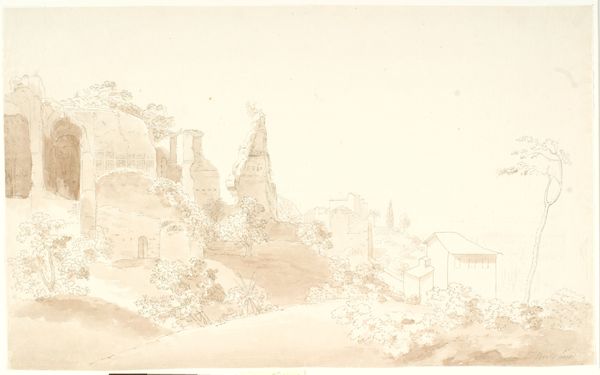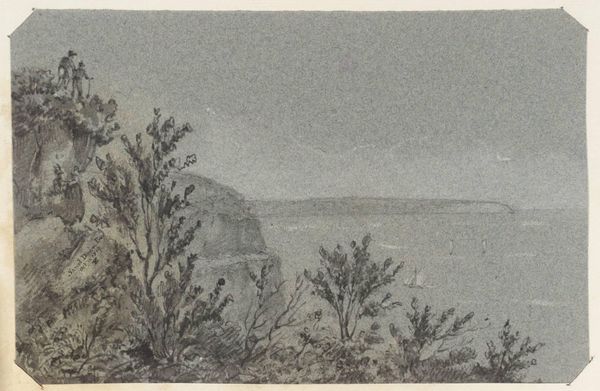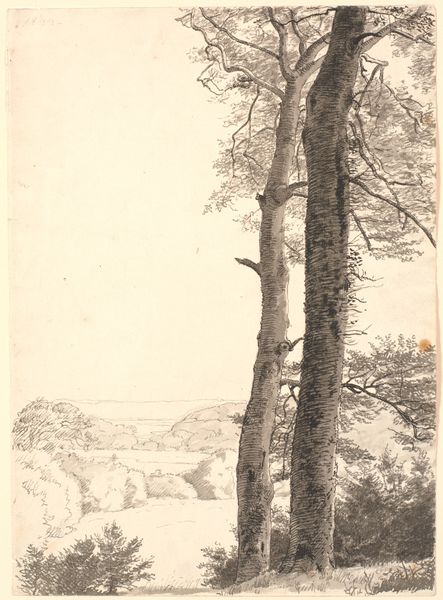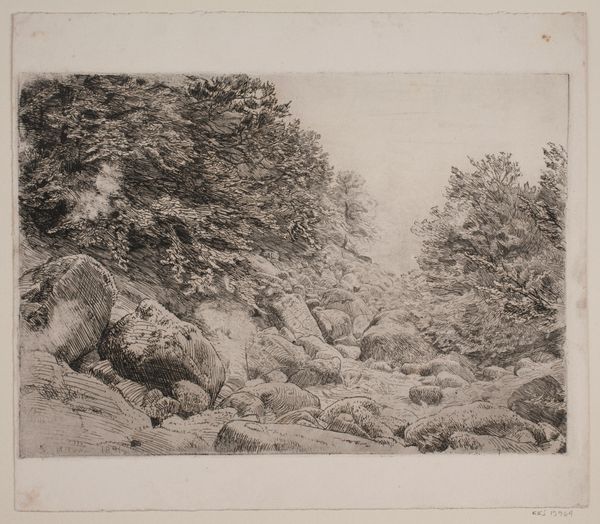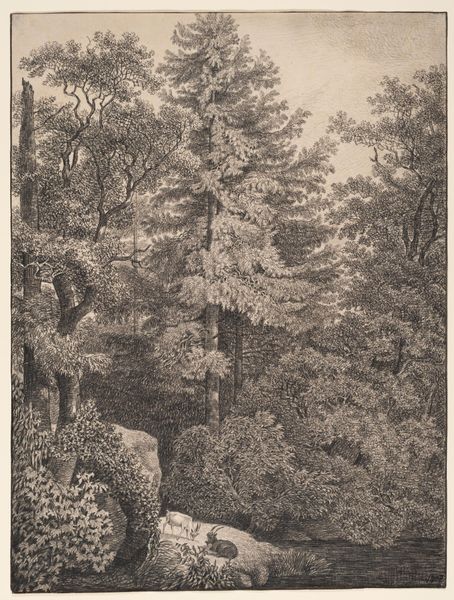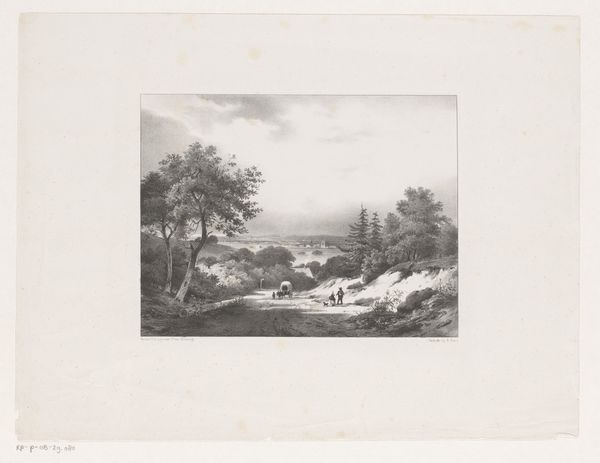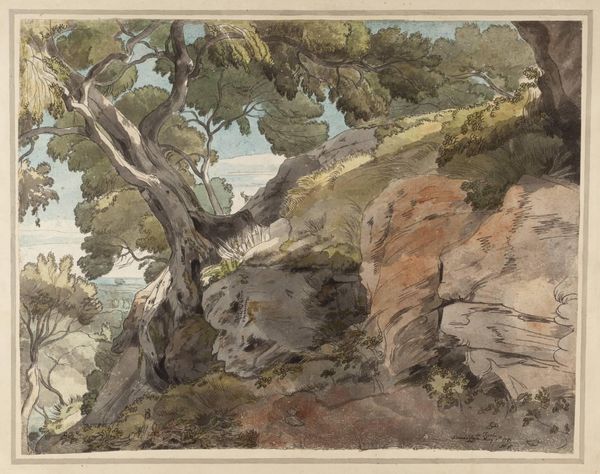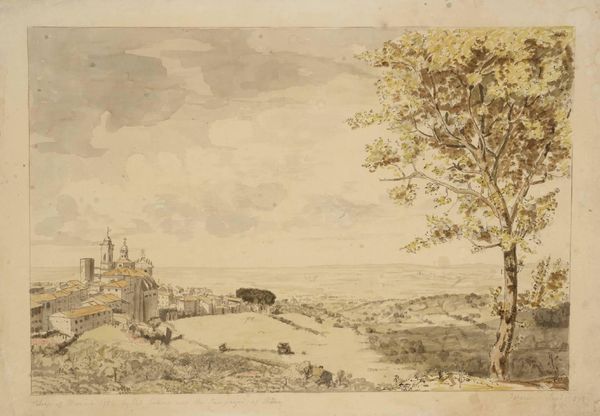
drawing, plein-air, watercolor
drawing
plein-air
pencil sketch
landscape
watercolor
romanticism
watercolour illustration
watercolor
Copyright: Public Domain: Artvee
Curator: At first glance, I find this scene strangely tranquil. It almost feels… staged. Editor: It is indeed! Here we have Christoffer Wilhelm Eckersberg's "View from Møns Klint at Sommerspiret," executed around 1809. Notice the meticulous rendering, achieved with watercolor and pencil in plein-air—or outdoors. Curator: The subdued palette contributes to the calm feeling. The fence, the bench, and the very sculptural tree framing the craggy cliffs; each element is so carefully placed! It has the aura of a scene built specifically for viewing. The image reads as if it were part of a larger narrative that unfolds through symbols within nature itself. Editor: Interesting. Consider that Eckersberg, painting during the Danish Golden Age, was instrumental in advocating direct observation, and plein-air study as a primary method of accessing “truth,” politically aligning with the rise of Romantic nationalism at the time. Nature becomes this site of objective investigation and almost spiritual contemplation of what constitutes “Danishness”. Curator: Absolutely! I sense this tension between raw observation and almost stylized representation. The landscape, with its stark white cliffs against the muted sea, echoes the sublime landscapes of the Romantic era but through this specific, curated vision. How did these carefully composed images serve broader ideological purposes? Editor: Think of the rise of landscape painting coinciding with Denmark’s national self-fashioning after the Napoleonic wars. The Møns Klint—as seen here—becomes an iconic emblem, a potent visual shorthand for Danish identity that then could be disseminated in printed media, performances, or other visual forms, shaping public sentiment about national heritage through imagery. The image, though rendered almost blandly, plays this potent role of encoding public values. Curator: The choice of Møns Klint itself as a motif reveals its role as a symbolic landscape. Editor: Indeed! That selection of the Klint elevates not just a geographical feature but specific shared ideas about what it meant to be Danish within that time. What started as faithful plein-air realism got absorbed quickly as public cultural messaging and iconic memory. Curator: This delicate artwork is a lens through which we can appreciate both personal artistic sensibility and the larger cultural currents shaping perception. Editor: Absolutely. It leaves us pondering the enduring relationship between how we see, what we choose to see, and what those visual choices say about who "we" are.
Comments
No comments
Be the first to comment and join the conversation on the ultimate creative platform.
